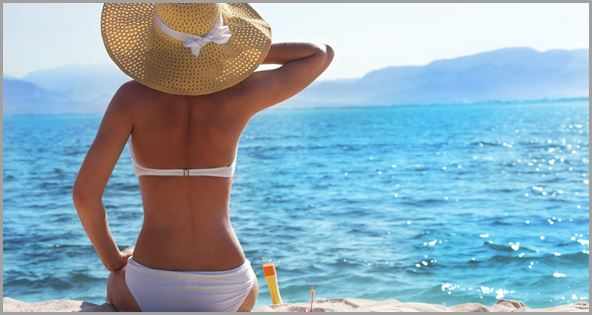
Safe Summer Fun in the Sun
One of the best aspects of summer—especially in eastern Idaho—is the warm weather and abundant sunshine that helps us forget about the long winters we endure. This summer, we hope you take some time planning to protect your skin from the sun when organizing your outdoor activities. Here are some helpful tips and hints to help keep your skin safe and healthy this summer.
First, remember that time of day makes a big difference when it comes to the harshness of the sun’s rays. UV rays are usually their strongest between 10 a.m. and 4 p.m. “When possible, stay out of the sun during these times,” says Julia McGee, PA, of the Bingham Memorial Dermatology Center. “And when you do go out, put on sunscreen.”
Julia recommends using sunscreen with an SPF of 30 or greater with the physical UV blockers zinc oxide or titanium dioxide. “Sunscreen should be reapplied every two hours even if you’re not in the water,” she says. “And don’t forget your ears, scalp, back of neck and the tops of your feet. I have seen some of the worst burns there.”
Julia also advises knowing what medications you’re taking and their side effects. “Some can make you really sensitive to the sun and cause burns.”
Second, if you’re at the beach or the lake, working in the garden, or just out and about, make sure to cover up. A wide-brimmed hat can give extra protection to your face and head, and a thin layer over your arms and legs will keep you cool while still protecting your skin.
And finally, although you may love that sun-kissed look, avoid tanning beds at all costs. Direct exposure to UVA rays causes the destruction of skin fibers and damages the elasticity of your skin. Long-term effects include premature aging and wrinkles. Not to mention that each time you tan, you increase your risk of skin cancer.
If you’ve taken all precautions, but you still get sunburned, drink lots of fluids to prevent dehydration. Additionally, topical aloe vera, oatmeal baths and cool compresses can be soothing, Julia says. “If blisters occur, leave them intact. The skin over the blister helps protect the area from infection,” she says. “If you have fever, chills, nausea or green or yellow pus, contact your healthcare provider.”
Getting Screened for Skin Cancer
As a dermatology provider, Julia McGee, PA-C, has treated all different kinds of skin conditions and ailments. If you have any questions, Julia is always welcoming new patients. To schedule a consultation, please call (208) 782-2930 in Blackfoot and 208/233-4455 in Pocatello.



